Best FPV Drones for Beginner Pilots
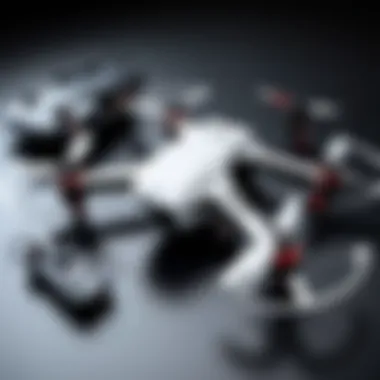
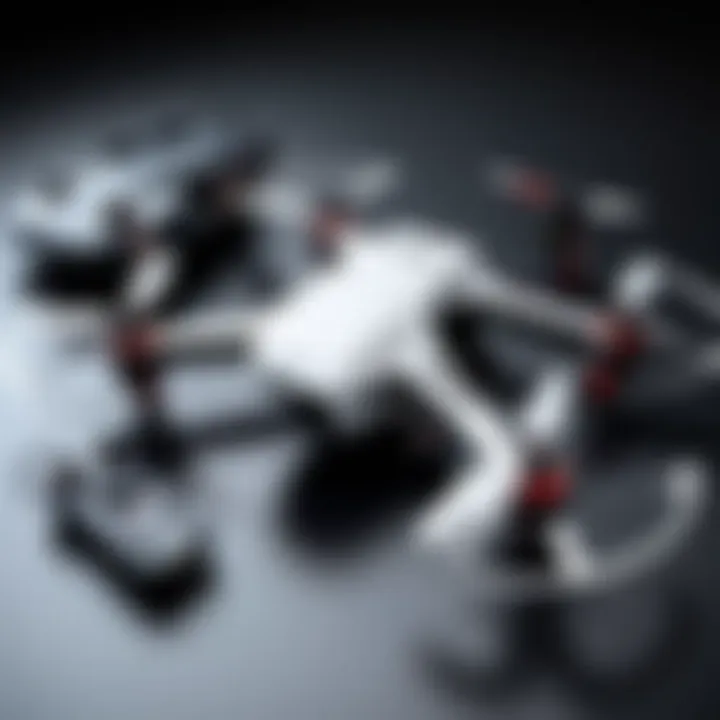
Intro
If you’re a rookie looking to dip your toes into the exhilarating world of first-person view (FPV) drone flying, you're in the right place. The allure of soaring through the skies, seeing the world from a bird’s-eye view, and engaging in thrilling races can be incredibly enticing. However, for beginners, the choice of drone can be daunting, given the multitude of options available. This guide will demystify the selection process by narrowing down the features that make an FPV drone suitable for newcomers, while ensuring that safety and usability remain top priorities.
Whether you're just starting to scratch that aerial itch or you're a tech aficionado wanting a hands-on exploration of the skies, understanding what makes a drone easy to control yet packed with features can elevate your flying experience. This article aims to arm you with essential insights so you can make an informed purchase, helping you confidently take to the skies.
Features Overview
When selecting an FPV drone as a novice pilot, it’s crucial to consider key features that not only enhance performance but also ease of use. With evolving technology, several models cater specifically to beginners, blending user-friendly controls with reliable functionality.
Key Specifications
- Camera Quality: Look for drones that come equipped with at least a 720p camera. This allows for decent video quality without overwhelming the pilot with settings that are too complex. Higher resolution options can come later as your skills develop.
- Flight Time: A typical flight time for beginner FPV drones hovers between 8 and 12 minutes. Drones with longer battery life provide more time to learn but often come at a higher price point.
- Weight and Size: Lightweight drones are easier to handle and generally safer for newcomers. Models weighing under 250 grams tend to be user-friendly yet robust enough to withstand the occasional crash.
- Controllers: Consider drones with simple yet responsive controllers. Some models offer an option to connect to your smartphone for flight controls, which might ease navigation for beginners.
Unique Selling Points
- Ease of Setup: An optimal beginner FPV drone should be easy to assemble and get flying with minimal hassle. Pilots should spend more time in the air instead of fumbling with complicated setups.
- Durability: Look for models known for their resilience. Plastic frames that can withstand crashes are important for novice pilots who are likely to encounter a few bumps along the way.
- Safety Features: Features such as altitude hold, GPS support, and emergency stop can greatly enhance flight safety, allowing beginners to focus on improving their piloting skills without worrying too much about losing control.
"Choosing the right FPV drone is a journey, not just a purchase. As a novice, it's about finding a balance where technology serves your learning curve."
Performance Analysis
To really grasp the nature of an FPV drone, performance is key. A drone should not only fly well, but it should also adapt to various conditions and meet the learning needs of a novice user.
Benchmarking Results
In performance tests, beginner drones should demonstrate stability in flight. For instance, a model boasting advanced stabilization features can smooth out erratic flying tendencies often exhibited by novice pilots. Drones tested with wind resistance in controlled environments help to showcase their reliability. This way, you’ll have a clearer picture of how a particular model may fare in challenging flying conditions.
Real-world Scenarios
Imagine facing a mild breeze or needing to navigate obstacles in your backyard. A competent beginner FPV drone should handle these scenarios adeptly, providing enough responsiveness for minor corrections. It’s also essential that the drone can withstand minor collisions without significant damage.
Understanding FPV Drones
In an ever-evolving tech landscape, the allure of First Person View (FPV) drones holds a particular charm for newcomers. Understanding these drones is not merely a preliminary step; it forms the bedrock upon which novice pilots can confidently build their skills. FPV drones allow pilots to immerse themselves in the flying experience, offering a unique perspective that stands in stark contrast to traditional line-of-sight flying. This section aims to dissect the core elements, benefits, and significant considerations surrounding FPV drones, thereby underscoring their relevance in the current technological milieu.
Definition and Functionality
FPV drones are equipped with cameras that transmit live video feed to the pilot's goggles or screen, providing a perspective akin to sitting in the cockpit. At their core, these drones enable the operator to experience flight as if they were soaring through the skies. The functionality of FPV drones hinges on a few pivotal components: the drone itself, the FPV camera, a video transmitter, and a receiver paired with goggles or a monitor.
- Drone Body: Often made of lightweight materials, modern FPV drones are designed for agility and speed, making them suitable for both racing and recreational flying.
- Camera: This parts captures high-definition video, essential for enhancing the flying experience and ensuring a clear view of obstacles.
- Video Transmitter: This transmits video signals to the goggles or screen, having various power levels that can affect range and clarity.
- FPV Goggles: These devices immerse pilots in the flight experience, featuring screens that display the video feed in real-time.
Understanding these components not only helps in selecting the right drone but also paves the way for troubleshooting and optimizing performance.
Purpose and Applications
FPV drones serve a multitude of purposes, making them versatile tools in various realms. Here are some of the notable applications:
- Racing: Racing drones have taken the FPV scene by storm. Pilots navigate through complex courses, promoting sharp reflexes and strategic thinking.
- Photography and Videography: The ability to capture breathtaking aerial shots allows filmmakers and photographers to tell stories from a new perspective, creating visually stunning content.
- Recreation: For many, simply flying a drone around local parks or open spaces serves as a method of relaxation and a playful pastime.
- Education and Training: Drones are becoming increasingly prevalent in educational settings, where they are used to teach lessons in physics, engineering, and programming.
FPV drones not only elevate the excitement of flying but also offer practical applications that span from leisure activities to educational tools.
In summary, understanding FPV drones equips aspiring pilots with the necessary knowledge to navigate the vast hobby landscape, allowing them to pursue their interests with confidence and creativity.
Essential Features for Beginners
When venturing into the realm of FPV drone piloting, novices may find themselves overwhelmed by the seemingly endless array of options available. Thus, pinpointing the essential features for beginners becomes paramount. It not only aids in selecting the right drone but also influences the overall experience of flying. User-friendly controls, robust build quality, and decent battery life stand at the forefront of these features. A well-chosen drone can make all the difference between frustration and enjoyment, ensuring that newcomers can nurture their interest without facing steep barriers.
User-Friendly Controls
Drones with user-friendly controls cater specifically to the needs of inexperienced pilots. This aspect is crucial because the learning curve can be daunting. The types of controls range from basic joystick layouts to sophisticated touchscreen interfaces, but simplicity is key for beginners.
For instance, many beginner drones come equipped with Altitude Hold and Headless Mode.
- Altitude Hold allows the drone to maintain a constant height, freeing pilots from the hassle of continuously adjusting throttle during their initial flights.
- Headless Mode, on the other hand, enables pilots to control the drone's direction relative to themselves rather than its frontal orientation, making it easier to navigate.
Such functionalities not only bolster confidence but also allow users to focus on enhancing their skills rather than becoming bogged down with complex maneuvers right out of the gate.
Durability and Build Quality
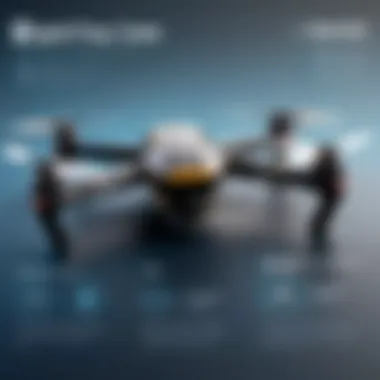
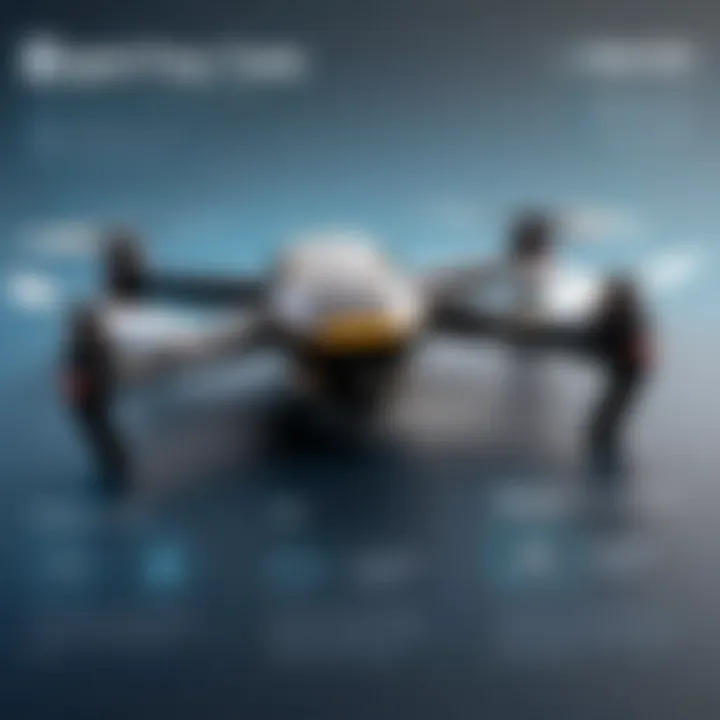
The durability and build quality of an FPV drone cannot be understated, especially for beginners who may experience a few inevitable bumps along the way. A drone built from high-quality materials will endure impacts without falling apart like a house of cards.
Many entry-level models feature reinforced plastic frames that can absorb shocks during hard landings or minor crashes—common occurrences for pilots still finding their wings. Additionally, lightweight yet sturdy drones increase the likelihood of recovery from mishaps, making them less intimidating for first-time flyers.
- A robust frame often comes with protective features, such as propeller guards, which shield delicate components and further reduce the chance of damage.
In essence, investing in a durable drone fosters a more forgiving learning environment and encourages ongoing practice without the constant fear of costly repairs.
Battery Life Considerations
Another vital consideration is battery life. Novice pilots shouldn't find themselves grounded after a fleeting five-minute flight. Ideal drones for beginners often provide at least 10 to 15 minutes of playtime, allowing ample opportunity to practice without unending interruptions.
The type of batteries used is also noteworthy.
- Lithium Polymer (LiPo) batteries are commonplace in the drone scene because of their lightweight nature and energy density.
- A drone equipped with swappable batteries gives beginners room to extend their flying time during a single session, which is particularly beneficial as hovering or maneuvering in the early stages often consumes a lot of juice.
Knowing how to manage battery upkeep also plays a role. Pilots should be mindful of charging time and storage conditions to ensure the longevity of their batteries. As a general guideline, never store fully charged batteries for an extended period; doing so can lead to reduced performance.
In summary, selecting an FPV drone that excels in user-friendly controls, boasts high durability, and provides reasonable battery life is essential for the novice pilot. It's about setting a solid foundation to encourage exploration of this advanced technology without the dread of overwhelming difficulties or frustrating breakdowns.
Types of Beginner FPV Drones
Understanding the various types of beginner FPV drones is crucial for anyone just stepping into this dynamic hobby. Each type offers unique benefits and considerations, making it imperative to choose wisely based on individual needs and preferences. Selecting the right model ensures that novice pilots not only get comfortable with flying but also enjoy the experience without unnecessary complications. This section breaks down the key categories of beginner-friendly FPV drones, helping neophytes make informed decisions that best suit their flying styles.
Ready-to-Fly Drones
Ready-to-fly (RTF) drones are often touted as the best starting point for newcomers to the FPV world. These models come straight out of the box, fully assembled and tested, making them incredibly convenient. Essentially, all you need to do is charge the battery, pair it with the controller, and start flying. This eliminates any steep learning curve related to construction or setup, which can be daunting for beginners.
One significant advantage of RTF drones is that they usually include everything a novice pilot needs—the drone itself, a transmitter, and in many cases, FPV goggles. This all-in-one package is not only cost-effective but saves time and effort. Additionally, since the drones are pre-tuned, beginners can focus on getting hands-on experience instead of worrying about technical setups.
However, they do come with limitations—primarily in their customization capabilities. Beginners should consider whether they value simplicity or a drone that they can mod as they grow in skills and knowledge.
Bind-and-Fly Drones
Bind-and-fly (BNF) drones take a slightly different approach than their RTF counterparts. These models are typically sold without a transmitter, which means they require separate purchase of a compatible controller. This option seems to appeal more to those who already own equipment or are planning to upgrade in the future.
The essence of BNF is flexibility. Once you have a compatible transmitter, you can fine-tune the drone's settings to suit your flying style as you progress. Some models even offer advanced features that can be appealing to a more tech-savvy beginner.
Yet, this type does demand a bit more technical knowledge since you'll need to ensure that your transmitter can effectively bind with your drone. Additionally, some might find the initial setup a tad intricate, which may deter absolute beginners from pursuing this option initially.
Toy-Grade Drones
Toy-grade drones, while often viewed as the "entry-level" option, shouldn't be dismissed outright. These models are generally more affordable and are designed primarily for casual flying and fun. There’s minimal risk involved, as the price point seldom breaks the bank.
The major advantage of toy-grade drones lies in their ease of use. They are lightweight, durable, and can handle the occasional bump or fall without risking significant damage. Novice fliers can practice basic maneuvers without the anxiety of crashing an expensive investment.
However, caution is warranted—these drones often lack key features found in higher-end models, such as stable flight systems or quality FPV capabilities. For those just out for some light-hearted fun, toy-grade drones serve their purpose. But if one seeks a deeper engagement with the hobby, they could find themselves quickly outgrowing such models.
Evaluating Popular Models
When it comes to selecting the right FPV drone, the task may feel like finding a needle in a haystack, especially for novices. Plenty of models clutter the market, each boasting diverse features and capabilities that cater to different needs and skill levels. Evaluating popular models is a vital step in this journey as it not only highlights the strengths and weaknesses of each drone but also helps beginners understand what to prioritize based on their unique preferences. From durability to user-friendliness, understanding the ins and outs of models available can greatly influence a new pilot’s initial experiences and foster a sustainable interest in the hobby.
Furthermore, analyzing popular models allows novice pilots to make informed choices without getting swept up by marketing hype or flashy advertisements. It breaks down the information into manageable portions, reducing the overwhelm that often accompanies technology purchases. A well-researched selection can enhance flight experiences and minimize frustration, which is crucial for those just enterring the FPV scene.
Model A: Features and Performance
Model A has garnered attention as an excellent entry-level drone for beginners. One of its standout features is its user-friendly interface. With intuitive controls, novices can grasp the flying mechanics fairly quickly. Equipped with a camera that provides clear, real-time footage, it enables users to experience firsthand the immersive flight perspective that FPV offers.
This model also incorporates sturdy construction, meaning it can handle light crashes that are almost inevitable during initial flights. The performance in various conditions, such as wind resistance and battery longevity, is admirable, making it a practical choice for those who want to maximize their flying time.
Model B: Features and Performance
Model B sits comfortably among the favorites for its brilliant balance of affordability and technology. This particular model features an adjustable camera, allowing pilots to change the angle while in-flight, which adds versatility to the experience. A unique selling point is its integrated safety features, which include automatic landing and obstacle avoidance systems that are particularly advantageous for inexperienced users.
Another significant factor is its battery life, offering extended flying time compared to other drones in the same price range. The build is more lightweight than other models, which could benefit maneuvers but might demand careful handling to avoid damage during crashes.
Model C: Features and Performance
Model C distinguishes itself as a premium choice that doesn’t overwhelm beginners. It combines robust performance metrics with comprehensible features. Beginners might appreciate the GPS functionality that not only aids in navigation but also enhances stability during flight.
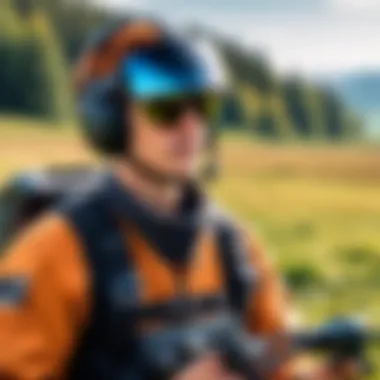
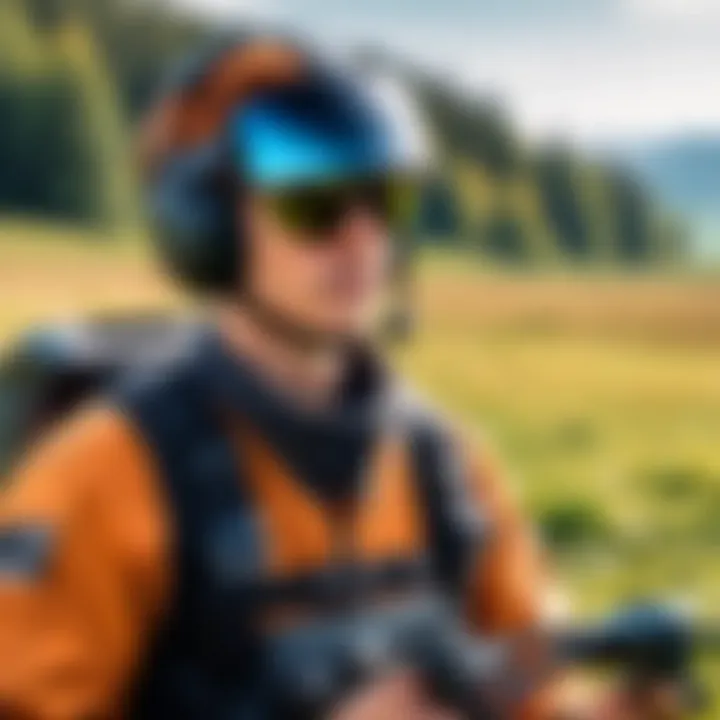
The model is renowned for its responsive controls and the clarity of its FPV camera, providing an engaging piloting experience. However, it comes at a higher price point, so potential buyers should balance their budget against the features offered. Many pilots have found it a bit more complex due to its extensive functionalities, but with practice, it can become a favorite tool in any enthusiast's kit.
"Choosing the right drone is about aligning your needs with the capabilities of the model. Take time to evaluate, don't rush into the decision."
In summary, evaluating these models—A, B, and C—provides a well-rounded foundation for novice pilots to start their journey in FPV flying. While each drone has its distinct advantages, weighing the features against personal preferences is crucial in making an informed choice.
Key Considerations When Buying
When diving into the world of FPV drones, it’s crucial for novices to keep a few key considerations in mind. Selecting the right drone uderpins the success and enjoyment of your experience in aerial photography and racing, so getting it right matters. Understanding your budget, the intended use, and availability of spare parts can greatly enhance your journey into flying. Here's a detailed breakdown:
Budget Constraints
Budgeting isn’t just about picking the cheapest drone off the shelf; it’s about evaluating what features you truly need and what you’re willing to pay for them. Many beginner pilots might think they need top-of-the-line tech to start, but that's not alway the case.
A drone can range from a couple of hundred dollars to several thousand. Here are few key points to consider:
- Initial Investment: Look for models that offer a good balance of price and features. Spending more won’t always guarantee a better user experience for beginners. Those higher-end models can be hefty, making sure you benefit from those extras and quirks is essential.
- Long-Term Costs: Think ahead. Will you need spare parts? How about accessories? Those can add up quickly, so account for that in your budget. A budget drone may seem like a bargain, but if it breaks quickly or requires expensive parts, it might cost you more in the long run.
- Value for Money: It’s a good idea to read reviews and forums, checking how real users find their purchases. Sometimes, a mid-range model far outperforms those top-tier options for what you’re looking for.
By keeping these in mind, you'll make a more informed decision without breaking the bank.
Intended Use
What do you plan to do with your drone? This question is a must-answer and can significantly influence your buying choice. Different uses need different features, and understanding your goals is key:
- Hobbyist vs. Professional Use: If you’re simply flying for fun, a toy-grade or budget-friendly drone will work just fine. However, if you have bigger dreams, like capturing stunning footage or entering competitions, aim for something a bit more advanced.
- Location Matters: Where will you be flying? In wide open spaces or in tight urban settings? Some drones handle the wind better than others, and space determines what size and capabilities you should seek.
- Learning Curve: For novices, a drone with easy-to-use controls and responsive handling is a great pick. If you're leaning toward racing or more complex maneuvers, consider models that allow for growth in skill level without feeling overwhelmed.
Clarifying your intentions before purchase will guide you towards a model that fits like a glove.
Availability of Spare Parts
No matter how careful you are, crashes happen. That's just part of the learning process in FPV flying. Knowing if you can easily find spare parts for your drone can save you headaches in the long run:
- Common Parts Availability: Pick a model that's popular among beginners. These tend to have readily available parts and accessories. Online communities, like those on Reddit or specialized forums, are fantastic resources to find info about what parts are easy to get.
- Compatibility: Ensure that your drone's components are compatible with other brands and models. If a battery dies, being able to purchase a compatible one can save time and frustration.
- Local Support: Check if there’s local support or shops that carry parts for your chosen drone. If you miscalculate that descents and wreck one, immediate help can keep you flying sooner.
In summary, taking these considerations into account can simplify your buying process and enhance your experience as a novice FPV pilot. Knowledge is power, and making an informed choice leads to enjoyment from day one.
Necessary Accessories
When embarking on the journey of operating FPV (First Person View) drones, novice pilots must acknowledge that it's not just about the drone itself. Investing in the right accessories enhances the overall flying experience, ensures safety, and helps maintain equipment longevity. Let’s break down the key accessories necessary for a fulfilling FPV experience.
FPV Goggles and Equipment
One of the most critical accessories for any FPV pilot is a pair of high-quality FPV goggles. These goggles provide a first-person viewing experience that is essential for immersive flying. Without them, the thrill of flying with real-time video is lost; it’s akin to riding a roller coaster with your eyes closed.
When selecting FPV goggles, important factors include:
- Resolution: A higher resolution leads to a clearer image and a better overall flying experience.
- Field of View (FOV): A broader view can make you feel more engaged in the flight.
- Comfort: As you might be wearing them for long periods, look for plush padding and adjustable straps.
Additionally, consider whether you need a receiver module with your goggles. This feature can significantly enhance your overall experience by allowing you to tune into various frequencies and channels.
Extra Batteries and Chargers
Let’s face it, nothing kills the joy of a drone flight like realizing you’ve run out of juice just when things are getting exciting. Therefore, having a set of extra batteries and a reliable charger is a must. Think of it as packing a snack for a road trip—you never know when hunger might hit.
Considerations for Batteries:
- Capacity: Look for batteries with higher milliamp hours (mAh) for longer flight times.
- Type: Most FPV drones use LiPo (Lithium Polymer) batteries. Ensure you understand how to handle them safely to avoid issues.
It’s not just about having a collection of batteries. Also, ensure you have a charger capable of balancing charge cycles, as this can prolong the life of your batteries significantly.
Tools for Maintenance
Lastly, tools for maintenance shouldn't be ignored. Think of your drone as a complex piece of machinery, necessitating regular upkeep to remain in peak condition. A well-maintained drone is a reliable drone; after all, prevention is better than a costly repair.
Some essential tools include:
- Screwdrivers: A set that includes both Phillips and flathead will be the bread and butter of drone maintenance.
- Propeller Wrench: This tool is indispensable when you need to change or adjust your propellers.
- Cleaning Rags and Solutions: Keeping your drone clean can improve both performance and longevity, so invest in good cleaning supplies.
Proper maintenance is like taking care of your health; neglect it, and you may face dire consequences.
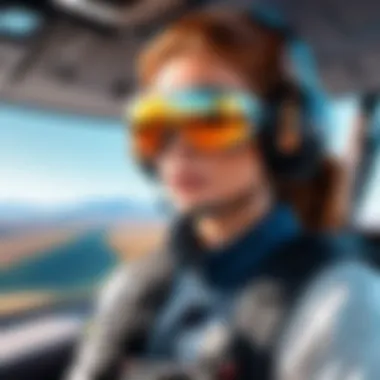
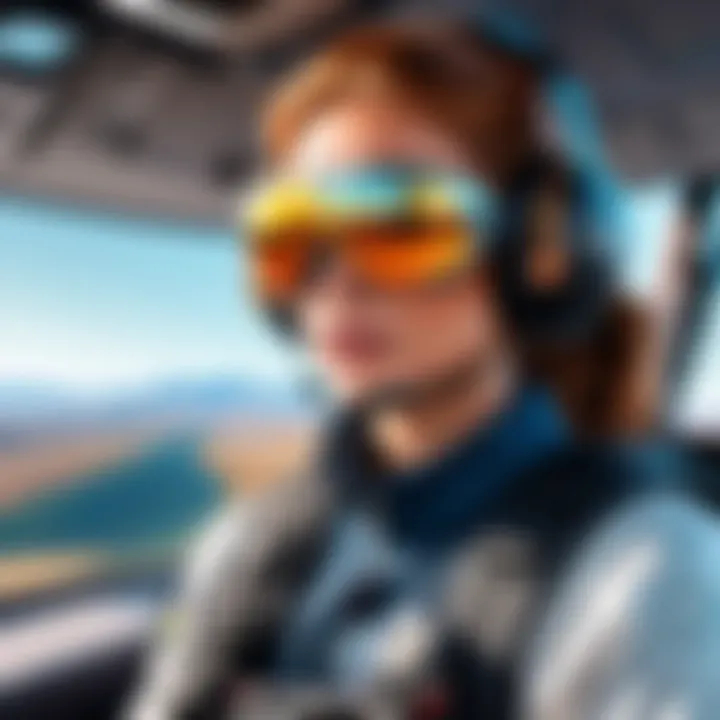
Equipping yourself with the above accessories ensures that when you finally take to the skies, you are ready for whatever challenge or adventure awaits. The richness of experience, combined with these accessories, will pave the way for a fruitful FPV flying journey.
Drone Regulations and Safety
Navigating the skies with an FPV drone not only involves mastering the controls but also understanding the legal frameworks surrounding their use. Regulation plays a crucial role in ensuring that drone pilots operate within the boundaries defined by law. For novice pilots, relaying on these laws isn't just a matter of legal compliance; it’s about flying responsibly and safely, which ultimately enhances their flying experience.
It's important for beginners to familiarize themselves with the regulations in their area. These laws vary significantly from region to region. In some cases, they might have to register their drone, while in others, no such requirement exists. The penalties for non-compliance can be serious, including hefty fines and potential confiscation of the drone. Therefore, both safety and legal compliance should go hand in hand to foster an enjoyable flying culture in which everyone can participate.
Understanding Local Laws
Understanding local laws is the cornerstone of responsible drone piloting. Every country has its own set of regulations regarding where and how drones can be flown. In the United States, for example, the Federal Aviation Administration (FAA) stipulates that operators need to follow specific guidelines, such as flying below 400 feet and maintaining visual line of sight.
To grasp these laws effectively, check out resources provided by your local aviation authority. Sites like FAA’s Guide to Drones offer clear explanations. For those in other countries, similar guidelines can easily be found by searching for local aviation regulatory bodies. Here are a few elements to consider when familiarizing yourself with drone laws:
- Registration: Some regions require drones over a certain weight to be registered.
- No-Fly Zones: Schools, airports, and military bases typically have restrictions on drone flights.
- Altitude Limits: Generally, keeping below 400 feet is a universal rule.
It's advisable to consult resources like Wikipedia for a more in-depth overview and to keep yourself updated about any changes in regulations.
Best Practices for Safe Flying
Once novice pilots have a grip on local laws, the next step is adopting best practices for safe flying. Safety is paramount. Ignoring guidelines can put not just the pilot at risk, but also bystanders and even property. Here are several best practices:
- Pre-Flight Checklist: Always conduct a thorough check of the drone before taking off. Inspect props, battery life, and camera functionality.
- Maintain Visual Line of Sight: Keeping your drone within your sight can help in making quick decisions.
- Choose Appropriate Locations: Flying in open spaces away from crowded areas is essential to avoid accidents.
"Safety is not just a priority; it is a habit that every responsible pilot must cultivate."
- Weather Awareness: Avoid flying in windy or stormy conditions. Bad weather can dramatically affect control and safety.
By strictly adhering to both regulatory guidelines and safety practices, novice pilots can not only enhance their flying prowess but also contribute to a community that enjoys this technology respectfully and safely.
Maintenance and Care Tips
When diving into the world of FPV drones, it’s crucial to note that proper maintenance and care can significantly extend the lifespan of your device. It doesn’t matter if you’ve just taken your first flight or if you’re a bit more seasoned; understanding how to maintain your drone will save you time and potentially money. Additionally, regular upkeep ensures optimal performance, which is critical for those still finding their bearings in this exciting hobby.
Regular Inspections and Cleaning
Regular inspections and cleaning are often overlooked yet are fundamentally important to drone upkeep. Just like in any machinery, small issues can snowball into major headaches. A frequent check-up of your drone can catch potential issues before they escalate into flight problems.
- Check for Wear and Tear: Every time you fly, take a moment to inspect the propellers, motors, and camera feeds. Little damages, like nicks or cracks on the blades, can affect flight quality dramatically.
- Dust and Debris Removal: After each use, gently clean the drone. Use a microfiber cloth to wipe down the body and ensure that no dust or debris clogs the camera lenses or motors.
- Battery Maintenance: Keep an eye on battery health. Ensure that you charge it properly and store it in a cool place. A well-maintained battery not only lasts longer but also guarantees that you have sufficient juice for longer flights.
"A penny saved is a penny earned" – the same goes for taking care of your drone. Preventable upkeep is far more cost-efficient than repairs.
Handling Crashes and Repairs
Crashes, unfortunately, are a part of the learning curve that novice pilots must face. Knowing how to handle these situations effectively is essential for any aspiring pilot.
- Stay Calm and Assess the Damage: If you run into the ground or a wall, the first thing is to breathe. After a moment of panic, assess the situation. Check if the drone powers on; this will help gauge the extent of the damage.
- Identify Common Issues: Learn to identify typical damage such as broken propellers, cracked frames, or unresponsive motors. Usually, these can be a quick fix with a bit of patience and the right tools.
- Spare Parts: Keep a small collection of spare parts on hand, like propellers and screws. This can save considerable hassle and time when you need to replace a broken piece swiftly.
- Refer to Manuals and Online Guides: Sometimes, knowing the repair process can feel like trying to decipher ancient hieroglyphs. Don’t hesitate to consult your drone’s manual or browse forums on Reddit or Facebook groups where fellow drone enthusiasts can offer firsthand advice.
- Know When to Seek Help: If you encounter a problem that seems beyond your expertise or comfort zone, seeking professional help can save you from making the issue worse. Most often, local hobby shops have seasoned technicians who can assist with repairs.
The Future of FPV Drones
The evolution of FPV drones is an exciting narrative unfolding before our eyes. As technology advances, the options available for both seasoned pilots and newcomers are becoming more impressive. Understanding where FPV drones fit into our tech-driven world can illuminate key trends and innovations shaping the hobby's landscape. With rapid shifts in technology, the future holds countless possibilities for enriching the flying experience, enhancing safety, and making drone aerodynamics more intuitive for novice pilots.
Emerging Technologies
In the coming years, FPV drones are set to benefit from several technological advancements that promise to reshape how we interact with these flying machines. One significant area is AI integration. Picture a drone equipped with intelligent algorithms capable of recognizing obstacles in real-time. This improvement would not only boost safety but also enable automatic navigation, allowing beginners to focus more on the thrill of flying rather than fretting over crashing.
Additionally, enhancements in battery technology are on the horizon, likely resulting in longer flight times and shorter charging periods. Traditionally, battery life has been a cornerstone concern. However, trends indicate a move towards more advanced lithium-sulfur batteries, potentially extending battery life multiple times over current standards.
Moreover, the incorporation of 5G technology promises to transform FPV drone experiences. Real-time video streaming will get a significant upgrade, allowing for smoother and high-definition feeds while pilots navigate their drones. With low-latency connections, even beginner pilots can expect a more seamless flight experience, reducing that clunky lag that often frustrates newcomers.
Finally, modular designs are becoming more prominent, enabling pilots to upgrade specific components rather than investing in a whole new drone. This adaptability will ensure that even novice pilots can modify and personalize their drones as they gain experience and develop unique flying styles.
Potential Trends in the Hobby
As FPV drone technology advances, so too do the trends within the hobby. A noticeable shift is towards community engagement, facilitated by platforms such as Facebook and Reddit. New pilots are no longer alone in their journeys; they can connect with experienced enthusiasts to share insights, troubleshoot issues, and swap flight footage, creating a vibrant, supportive environment.
Another up-and-coming trend is the emphasis on eco-friendliness. As environmental consciousness rises, manufacturers are likely to introduce drones made from sustainable materials and designs that reduce noise pollution. This shift not only addresses growing concerns regarding the environment but also aligns with the acceptance of drones in natural settings like parks and backyards.
Competition is set to grow, mirroring the influx of new pilots and tech developments. Racing leagues are gaining popularity, compelling manufacturers to innovate with enhanced speed and agility in their drones, thus pushing boundaries. For novices, this means more opportunities to engage in thrilling racing experiences while improving their skills.
Finally, the rise of educational programs around FPV drone flying can be observed. Schools and organizations may integrate drone piloting into their curriculums, allowing students to apply STEM concepts in real-time. This not only nurtures interest in technology but also fosters a new generation of skilled pilots, ensuring the future of the hobby remains bright.
The horizon for FPV drones is filled with possibilities that reach well beyond mere flying; the future will combine technology, community, environment, and education to enhance the pilot experience.
As we look ahead, it's evident that FPV drones will continue to captivate not only the adventurous spirit of hobbyists but also encourage thoughtful discussions among tech enthusiasts. This evolving landscape assures that novice pilots stepping into this exciting hobby will be greeted by a plethora of choices and innovations.



